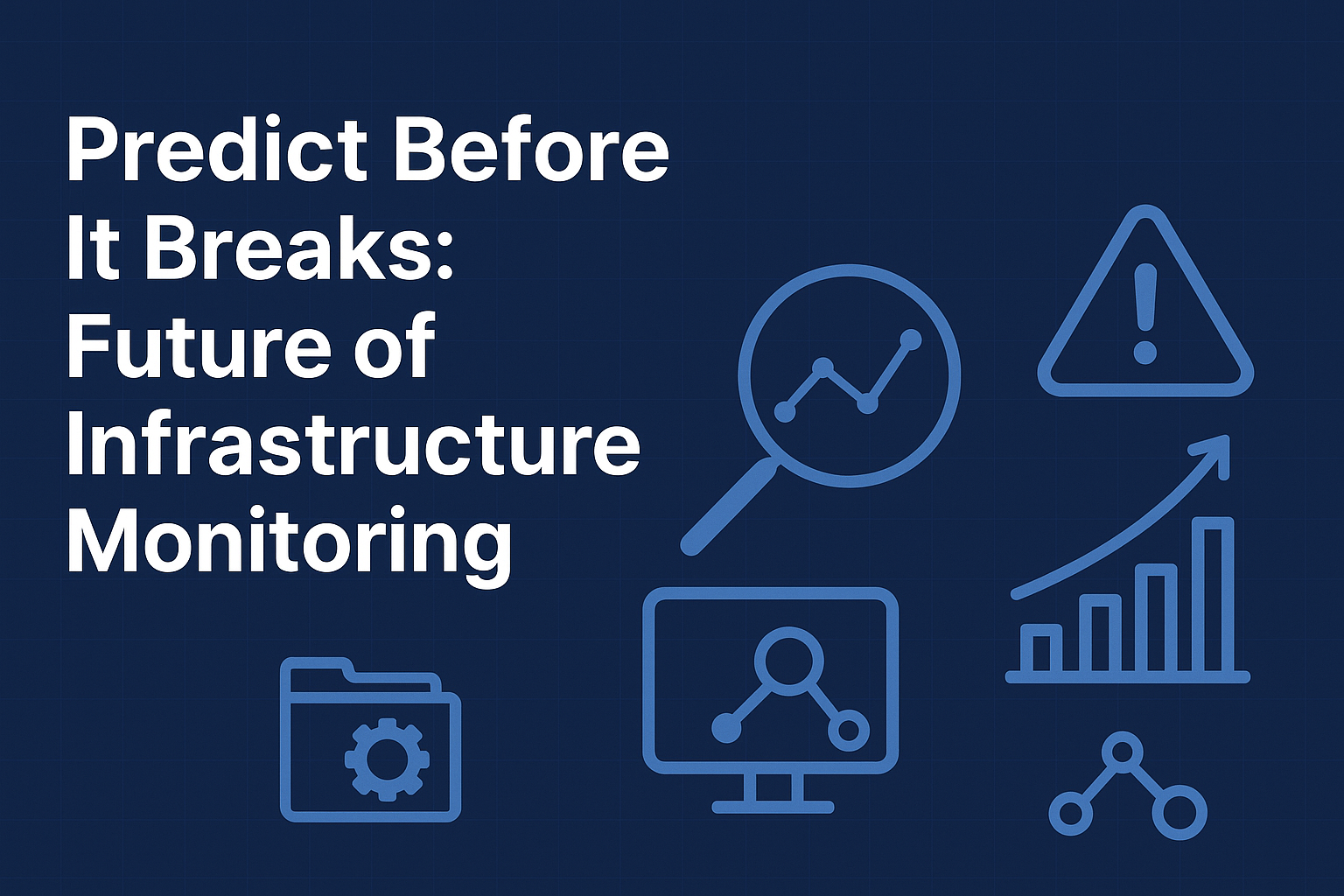Introduction Downtime is more than an inconvenience — it’s a direct hit to business performance. Studies show that the average cost of IT downtime exceeds $300,000 per hour, with some enterprises reporting losses in the millions of dollars. As businesses move to hybrid and multi-cloud environments, the complexity of IT infrastructure makes traditional monitoring insufficient. The future lies in predictive infrastructure monitoring — using AI, machine learning, and real-time data to anticipate issues, automate remediation, and keep systems running seamlessly before users ever notice a problem.
Why Predictive Monitoring Matters
- Downtime is Too Expensive to Ignore
Unplanned outages not only affect revenue but also brand trust. Predictive monitoring helps businesses cut unplanned downtime by 30–50%, saving millions annually. - Traditional Monitoring is Reactive
Legacy monitoring tools rely on static thresholds and alerting rules. By the time an alert triggers, damage may already be done. Predictive systems work proactively, detecting anomalies as they emerge and forecasting issues.
Complex Systems Need Smarter Tools
Modern infrastructures include containers, microservices, APIs, and multiple cloud environments. AI-driven monitoring scales with this complexity, learning patterns over time and improving detection accuracy.
Key Capabilities of Predictive Infrastructure Monitoring
🔍 AI-Powered Anomaly Detection
Machine learning models analyze metrics such as CPU usage, latency, memory, and network behavior to identify subtle deviations from normal baselines.
📈 Predictive Forecasting
Historical data is used to forecast potential failures — like capacity limits, disk space shortages, or performance slowdowns — giving teams time to prevent incidents.
📊 Root Cause Correlation
AI correlates logs, metrics, and traces across distributed systems to pinpoint the exact source of an issue, reducing Mean Time to Resolution (MTTR) by up to 40%.
🔕 Alert Noise Reduction
Instead of hundreds of alerts, predictive monitoring filters out false positives and prioritizes incidents by severity, helping engineers focus on what truly matters.
Business Outcomes of Predictive Monitoring
| Metric | Traditional Monitoring | Predictive Monitoring |
| Unplanned Downtime | High, reactive resolution | 30–50% reduction through early detection |
| Mean Time to Resolution (MTTR) | 3–6 hours on average | 25–40% faster resolution with AI correlation |
| Alert Noise | High (false positives) | 70–80% reduction with ML-based filtering |
| Cost Impact | High due to outages | Significant savings in lost revenue and operations |
4️⃣ Automate Low-Risk Remediation – Allow AI to resolve simple issues automatically, freeing engineers for complex problems.
Steps to Implement Predictive Monitoring
1️⃣ Centralize Telemetry Data – Aggregate logs, metrics, and traces from all systems into a single observability platform.
2️⃣ Train AI Models on Historical Data – Give the system enough context to build accurate baselines.
3️⃣ Start with High-Impact Systems – Focus on revenue-critical applications or customer-facing systems first.
5️⃣ Iterate and Improve Continuously – Regularly refine detection models and adjust baselines as infrastructure evolves.
Conclusion
The future of infrastructure monitoring is predictive, intelligent, and proactive. By leveraging AI to anticipate failures, automate responses, and mitigate alert fatigue, businesses can achieve consistently high availability, lower operational costs, and a more seamless customer experience.
The companies that adopt predictive monitoring today will gain a competitive edge tomorrow — staying ahead of outages, ahead of disruptions, and ahead of the competition.







